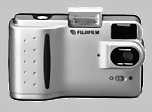 +
+
 =
=
 *
*
Much of this information also applies to the MX-1200, and the rest of the serial-port Fujifilm range. gphoto seems to work better than fujiplay.
See below for MX-1200 specific details
The only down-sides I can see are:
Get Thierry Bousch's fujiplay program, and install it. Plug the serial lead into a spare port, and then you can:
The DX-5 does not seem to have an internal clock, nor does it have a thumbnail preview function, so fujiplay's setdate and preview commands don't work. If anyone can get more out of the DX-5 using fujiplay, please let me know.
GNOME's gphoto also works, but it seems to convert the files to an intermediate format, then converts them back to JPEG. This causes loss of image quality.
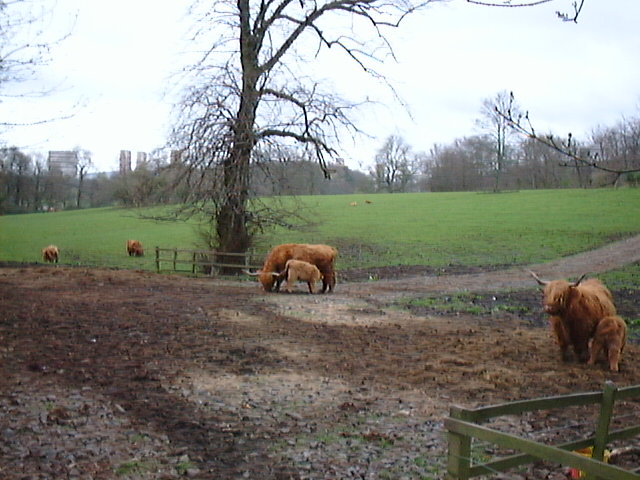
An unprocessed fine mode image, straight from the DX-5
It's not too sharp, nor too bright, is it? Tools like ImageMagick and XV make life much easier than fiddling about in a darkroom.
Although JPEG Images are widely used, many people don't know how to get the best out of them. Look at the JPEG FAQ for enlightenment. I'm no expert, but the following tips have proved useful for me:
The Sharper Image: Sharpening the image by 30-50% is often the only manipulation you'll need to do. jpegtran (part of the IJG JPEG package) can also do lossless rotation of JPEG images; this is useful, as the DX-5 doesn't have a portrait mode.
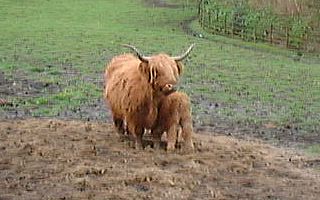
Crop on 8×8 pixel boundaries only: JPEG images use 8 pixel squares to encode the image data (take a look at the appalling smiley to see 8-pixel aliasing at its worst). Thus it makes sense to crop images to width and height multiples of 8×8 pixels to avoid distortion at the edges of the picture.
If your source picture is a JPEG image, then you must be careful to have your crop box only on 8 pixel boundaries. I didn't do this with the picture above, and there's an unpleasant amount of noise in the image. There is a patch to jpegtran that allows lossless cropping; wish I'd known about it when I did this.
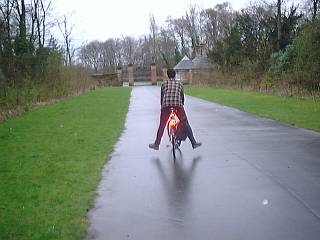
Don't fear small images: Web pages don't need huge images, so scale down when you need to. Also, make use of JPEG's quality feature to make the file sizes smaller. A quality setting of 50-70% is usually okay, but sometimes you can get away with 30%. Trial and error is the best way.
Printing JPEG images: There is but one program that does this correctly: jpeg2ps. It doesn't convert the image data to a huge colour image, but uses PostScript Level 2's DCT functions to keep the JPEG data intact. File sizes are small, printing can be quick, and assuming your printer is a bit smart, you'll get the best results.
Another focus-free point and shoot, but updated with higher resolution, 2x "digital zoom", some more file quality options and a preview screen. It works well enough within its limitations, though it can't be controlled from the computer like the DX-5.
gphoto seems to work better than fujiplay with this camera; fujiplay often hangs.
That's not to say that gphoto works perfectly; I find it gives up on downloading for trivial reasons, and basically refuses to work in gui mode.
I use the following Bash script to get pictures from the camera:
#!/bin/sh
# getpics - use gphoto to download from MX-1200
# usage: getpics [startno]
# if startno (starting picture) is not specified, starts from #1
# if it is, starts from that picture number
# works for me -- scruss@bigfoot.com, 17/12/02001
if
[ -z $1 ]
then
picture=1
else
picture=`echo $1 | awk '{print int($1 + 0);}'`
fi
totalpics=`gphoto -n | tail -1 | sed 's/#*//;'`
echo $totalpics in camera . . .
while
[ $picture -le $totalpics ]
do
echo Picture $picture of $totalpics :
gphoto -s $picture `printf "fdc%05d.jpg" $picture`
picture=$(($picture+1))
done
This outputs pictures to the files fdc00001.jpg, fdc00002.jpg, fdc00003.jpg, ... or starts from the picture number you specify.
Footnote:
*:
Yes, I know this looks cruddy; it was meant
that way. It's a 2% quality JPEG, neatly illustrating the 8x8
pixel elements that make up JPEG images.
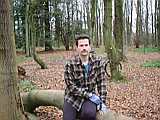
Looking round all the Linux digicam pages, it seems to be traditional to have a geeky wee picture of the author. Here's mine...